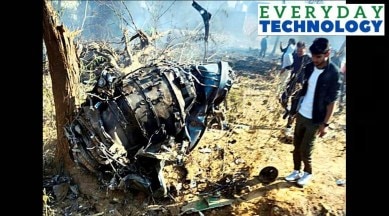IAF Sukhoi and Mirage crash: What is situational awareness in aviation, a critical component of flying safely?
A Court of Inquiry will examine the reasons for the tragedy that has led to the loss of two IAF jets and a fighter pilot’s life. If the aircraft clipped each other, the investigation is likely to look at the possibility of a loss of situational awareness. We explain.

A Court of Inquiry has been set up to ascertain the cause of the crash of an IAF Sukhoi-30 (Su-30) and a Mirage-2000 on Saturday (January 28) morning.
The two fighter jets had taken off from the Gwalior air base on a training sortie. The Mirage-2000 crashed at Morena, Madhya Pradesh, killing its pilot Wing Commander Hanumanth Rao Sarathi (36). The Su-30 crashed at Bharatpur, Rajasthan. Both pilots in the Su-30 ejected safely.
monthly limit of free stories.
with an Express account.
The inquiry will establish the exact cause of the crash, which is often more complex than it initially appears. If indeed the jets collided mid-air as has been suggested, the investigation is likely to ascertain, among other things, if loss of ‘Situational Awareness (SA)’ was one of the factors responsible for the tragedy.
Situational Awareness (SA)
Simply put, it’s the cockpit crew’s mental picture of the aircraft’s location in relation to the terrain and other aircraft in the vicinity in a constantly changing, three-dimensional space. An aircraft is constantly in motion and moves at great speed covering huge distances, presenting an ever-changing SA the crew has to keep up with. The crew builds this ‘mental model’ from the array of cockpit instruments, maps, charts, data being fed from outside (ATC, other pilots) and even ‘looking outside’ on a clear day.
Military flying and SA
SA was initially a military expression. Military jets often fly in close formation or simulate close combat scenarios, where fighter jets close in on one another at thousands of miles per hour, during training missions. Even a momentary loss of SA can prove fatal.
Civilian flying and SA
Although they fly in more benign environments, loss of SA has caused mid-air collisions between civilian aircraft too, especially in airspace near airports where traffic is high with several planes taking off or preparing to land around the same time. Loss of SA has also caused passenger jets to collide with mountains in poor visibility. Technologies like the Ground Proximity Warning System (GPWS) and the Traffic Alert and Collision Avoidance System (TCAS) have vastly helped improve the cockpit crew’s SA and, consequently, prevent potential collisions, mid-air or with terrain.
Collision in cruise
On September 29, 2006, an Embraer Legacy 600 business jet clipped a Boeing 737, operating Gol Transportes Aéreos Flight 1907, over the Amazon jungles in Brazil’s Mato Grosso, killing all 157 passengers and crew onboard the Boeing 737 as it plunged 37,000 ft to the ground. Both pilots of the Embraer jet survived the collision after managing to land the crippled aircraft.